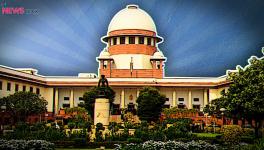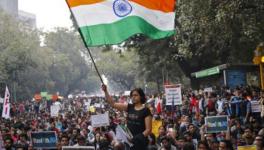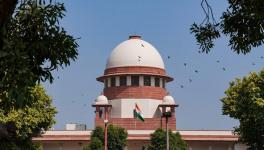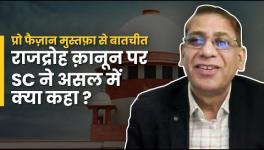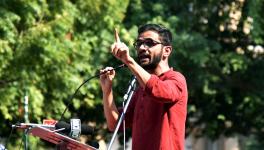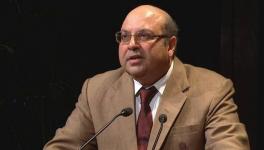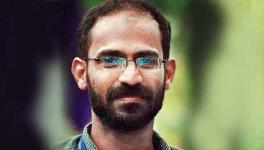Justice Nariman Urges the Supreme Court to be Proactive in Striking Down India’s Sedition Law
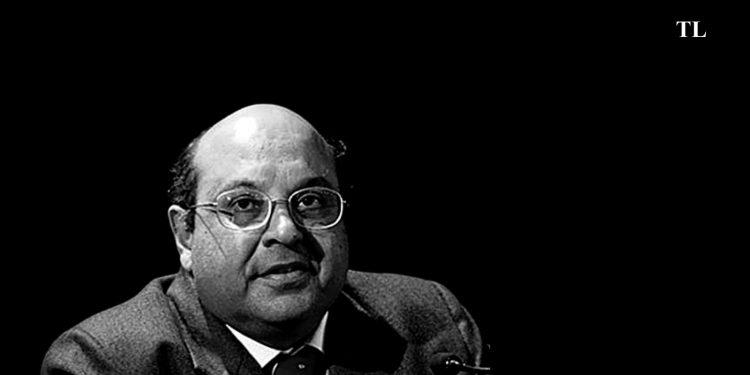
AT an event organized to commemorate the 109th birth anniversary of the freedom fighter Viswanath Pasayat, former Justice of the Supreme Court Rohinton Fali Nariman said that while it was heartening to know that the Nobel Peace Prize was being conferred on two journalists from the Phillippines and Russia, nations unknown for their press freedom, it begged the question, why our nation, the largest democracy in the world is ranked at 142 out of 180 countries on the World Press Freedom Index. The judge observed that the cause for this is probably the outdated colonial and repressive laws the country continues to follow.
He described the many democracies that have done away with their anti-terror laws over the years. In England, Justice Nariman said, after the Treason Act was promulgated by Edward III, England matured as a democracy, and abolished its sedition law in 2009 on the recommendation of the 1977 Law Commission. Similarly, in the US, the Alien and Sedition Acts of 1918 became the subject matter of several US Supreme Court judgments after World War I.
Discussion of American jurisprudence
Justice Nariman drew attention to Justice O.W. Holmes’ test of clear and present danger, established in Schenck vs. United States, wherein the Court portrayed the significance of free speech with a beautiful example:
“The most stringent protection of free speech would not protect a man in falsely shouting ‘Fire’ in a theatre and causing a panic… The question in every case is whether the words used are used in such circumstances and are of such a nature as to create a clear and present danger that they will bring about the substantive evils that Congress has a right to prevent. It is a question of proximity and degree.”
Also read: Decoding the history of Sedition law in India
Justice Nariman further quoted the Justice Holmes’ dissenting opinion in the Abrams case. He said, “that the best test of truth is the power of the thought to get itself accepted in the competition of the market, and that truth is the only ground upon which their wishes safely can be carried out.” These words of Justice Holmes have now found their way into the literature of law.
“We should be eternally vigilant against attempts to check the expression of opinions that we loathe and believe to be fraught with death unless they so imminently threaten immediate interference with the lawful and pressing purposes of the law that an immediate check is required to save the country,” Justice Nariman said.
Tracing the ups and downs of free speech in the United States, Justice Nariman mentioned that the position on free speech was settled in the judgment of the US Supreme Court in Brandenburg v. Ohio, which held that “free speech cannot be curbed unless there is proper perception as to imminent lawless action.” Justice Nariman then went on to question the continued relevance of Section 124A of the Indian Penal Code in a democracy like India.
Sedition trials in colonial India
He explained that while the Indian Penal Code framed by British historian and politician T.B. Macaulay did have a section on sedition, its non-mention in the final document was the result of an oversight; many did not, therefore, realize it existed. It was later in 1870, that it was re-discovered and incorporated as section 124A of the IPC.
Justice Nariman mentioned the Bangobasi case, the first case where the sedition law was invoked in British India, stoked by articles that attacked the Age of Consent Act, 1891, which was introduced to curb child marriages. The British judge held the editor liable despite the fact that he had not written the article. It was held that the section did not require one to have written the offending article, and that it was sufficient that the magazine printed it – that in itself was an attempt to incite disaffection. ‘Disorder’ played no part in sedition and it was enough to say that the government should be brought down.
Also read: Looking back at the legacy of Justice Rohinton Fali Nariman
Justice Nariman then highlighted a series of three major judgments relating to sedition from pre-independence India. The first was the Bal Gangadhar trial where Bal Gangadhar Tilak was charged with sedition for his writings in his newspaper, the Kesari, where he talked about the famine that had caused the plague. He argued that collectors were interfering with the rights of Indian citizens by entering their homes without warrants to check if the plague was spreading. For this, he was sentenced to 18 months of imprisonment. The judge summed up that there was no need for the writing to have caused disorder.
It was enough that something was said against the government of the day, and that such words excited disaffection, or resulted in the absence of affection.
The second important trial was the Satara trial, in which the editor wrote about swaraj, and was sentenced to 18 months of imprisonment with the same reasoning. The third important case was one in Allahabad, where section 124A was invoked against a Muslim daily, and the editor was advanced the sentence of 18 months despite issuing an apology. After this, section 124A was amended to include ‘disloyalty’ towards the government, which was an equally vague term.
Justice Nariman discussed how Tilak was again tried for sedition in 1909, for his writings offering justifications for the murder of two European women in a bomb-blast initially aimed to neutralize a magistrate. He wrote, “if you mistreat a cat, it is bound to pounce on the master sometime,” and described the bomb as “an amulet which a proud Indian wears around his neck to get rid of the rule which suffocates him.” Here too, he was sentenced to 6 years by the jury.
Also read: No unrest, no sedition: How Lokmanya Tilak challenged Section 124A
Justice Nariman then discussed three important events, namely, the Jallianwala massacre, the Rowlatt Acts, and the Khilafat movement, after which Mahatma Gandhi initiated the civil disobedience movement. However, whenever there was violence, he called it off, but was charged with sedition every time.
At his trial, Gandhi stated, “Section 124 A, under which I am happily charged, is perhaps the prince among the political sections of the Indian Penal Code designed to suppress the liberty of the citizen. Affection cannot be manufactured or regulated by law. If one has no affection for a person or system, one should be free to give the fullest expression to his disaffection, so long as he does not contemplate, promote, or incite to violence. But the section under which mere promotion of disaffection is a crime. I have studied some of the cases tried under it; I know that some of the most loved of India’s patriots have been convicted under it. I consider it a privilege, therefore, to be charged under that section. I have endeavored to give in their briefest outline the reasons for my disaffection. I have no personal ill-will against any single administrator, much less can I have any disaffection towards the King’s person. But I hold it to be a virtue to be disaffected towards a Government which in its totality has done more harm to India than any previous system.”
Also read: Sedition law: an imperial legacy, and a weapon of intimidation and subjugation by the regime
Justice Nariman mentioned that these were the events that set the stage for the 1942 case of Niharendu Dutt Majumdar, where the Federal Court ruled that in the absence of any public disorder, one cannot be charged with sedition for mere disaffection to the government of the day. This was subsequently overruled by the Privy Council by relying on the decision in the Bal Gangadhar case, citing, “The offence consists in exciting or attempting to excite in others certain bad feelings towards the government. It is not the exciting or attempting to excite mutiny or rebellion or any sort of actual disturbance, great or small. Whether any disturbance or outbreak was caused by these articles is absolutely immaterial.”
But Justice Nariman pointed out that this reading was overruled in the King-Emperor vs Sadashiv Narayan Bhalerao case by the Privy Council, which held that “the word “sedition” does not occur either in Section 124A or in the rule; it is only found as a marginal note to Section 124A, and is not an operative part of the section, but merely provides the name by which the crime defined in the section will be known. There can be no justification for restricting the contents of the section by the marginal note.”
Trajectory of sedition offence in post-independence India
Justice Nariman also highlighted how, during the constituent assembly debates, sedition did appear in the first draft, but Sardar Vallabhai Patel, at the insistence of Somnath Lahiri, removed it. When it came up in the second draft as well, it was removed as a result of vociferous attacks by K.M. Munshi, among others. Shortly after these judgments, an amendment was made, and finally ‘public order’ found a place in the clause which envisages “reasonable restrictions” on the freedom of expression.
Justice Nariman then mentioned that it is necessary to rid ourselves of the shackles of our colonial masters. He pointed out that any restriction on the freedom of speech and expression, as provided for in Article 19(1)(a) of the Constitution of India can only be implemented if such restriction is contained in Article 19(2), which did not contain the term ‘public order’ in its original form. Justice Nariman referred to the cases of Romesh Thapar (1950) and Brij Bhushan (1950), where sedition had not been used by the Supreme Court. Striking down Section 9 of the Madras Maintenance of Public Order, Act, 1949 and Section 7 of the East Punjab Public Safety Act, 1949, respectively, the apex court in these two judgments, which were given on the same day by the same six-judge Constitutional bench, noted that the heart of democracy is free political speech, and that pre-censorship was against this spirit of democracy.
Also read: Sedition law: an imperial legacy, and a weapon of intimidation and subjugation by the regime
The retired judge finally referred to how in the Kedar Nath judgment of 1962, the Supreme Court opined that the penal provision of sedition would be attracted only if the expression of disaffection is accompanied by an attempted incitement to violence or disorder. He mentioned that the Shreya Singhal case of 2015 was decided along similar grounds. The latter judgment, which had been authored by Justice Nariman, had relied on the reasoning that the freedom of expression can only be restricted if there is a reasonable apprehension as to the incitement of offenses or violence.
Also read: Supreme Court must course-correct from its Kedar Nath Singh ruling
He also discussed the coming into force of the draconian Unlawful Activities (Prevention) Act, 1967, which followed India’s wars with China and Pakistan. The Act contains no provisions for anticipatory bail and sets out a minimum sentence of imprisonment of 5 years, which can extend to imprisonment for life. For bail too, the only requirement placed under the Act is that law enforcement establish a prima facie case.
Here, Justice Nariman pointed out that a distinction was made between India as a State, as a concept, as a country, and as the government of the day.
Justice Nariman brought attention to how the law is now being used for booking persons, including journalists, under charges of sedition, with large sentences and no anticipatory bail. This, in turn, the retired judge remarked, is causing a chilling effect on free speech.
He observed that it is time the Supreme Court takes up the issue and implements the recommendations of the Law Commission. He also mentioned that the Supreme Court, in July this year, had questioned whether the law was “still necessary after 75 years of independence”.
Justice Nariman concluded that even the judgement in Shayara Bano in 2017 recognized the concept of manifest arbitrariness, and said that following the judgement, manifest arbitrariness is now a ground that can be used to argue that a colonial law is being brought to oppress free citizens. He said that the Supreme Court must stop sending these cases back to the government; governments come and go and it cannot be left to them to amend or repeal archaic laws.
(Shreyasi Singh is a B.A., LL.B. (Hons.) student at Dr. Ram Manohar Lohiya National Law University, Lucknow.)
Originally Published in The Leaflet
Get the latest reports & analysis with people's perspective on Protests, movements & deep analytical videos, discussions of the current affairs in your Telegram app. Subscribe to NewsClick's Telegram channel & get Real-Time updates on stories, as they get published on our website.










